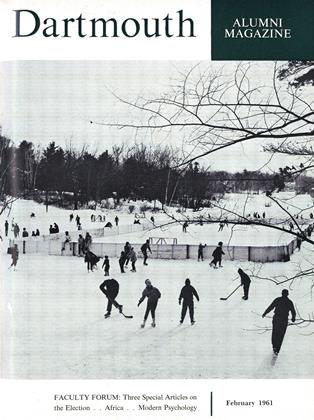UNDER way at Dartmouth Medical School is a new five-year study which may provide the answer to an age-old question concerning life - how living cells convert energy from the sun into the chemical energy they need to live. The National Science Foundation has awarded a $200,000 grant to a microbiological research team that is seeking the answer. Dr. R. Clinton Fuller, chairman of the Medical School's Department of Microbiology, is directing the program.
He and his colleagues on the research team came to Dartmouth this year from the Brookhaven National Laboratory to carry on their work in energy metabolism. The group is seeking the answer through the study of micro-organisms, where the subcellular structures which carry on photosynthesis are relatively simple and easy to define.
Through their research the group hopes to contribute to an understanding of how the photochemical structures make life-sustaining chemical compounds from radiant energy. This work is related to that of the space biologists who are investigating the use of microorganisms to provide oxygen and food for space travelers. On a prolonged flight into outer space where every pound of weight and space is precious, oxygen supply is a major problem.
Working with Dr. Fuller are Dr. Clarke T. Gray, associate professor of microbiology; Dr. David E. Hughes, a visiting scientist from the University of Oxford; and Dr. C. R. Benedict and Dr. S. F. Conti, both research associates from Brookhaven.
 View Full Issue
View Full Issue
More From This Issue
-
 Feature
FeatureA Dollop of Yankee Talk
February 1961 -
 Feature
FeatureCampus Cosmopolitans
February 1961 -
 Feature
FeatureNow They're Flicks, Not Movies, But The Nugget Still Carries On
February 1961 By GEORGE O'CONNELL -
 Feature
FeatureDr. Myron Tribus of UCLA Named Dean of Thayer School
February 1961 -
 Feature
FeatureSNOW TIME
February 1961 -
 Article
ArticleProblems of Land Development in the New African Nations
February 1961 By BARRY N. FLOYD,







